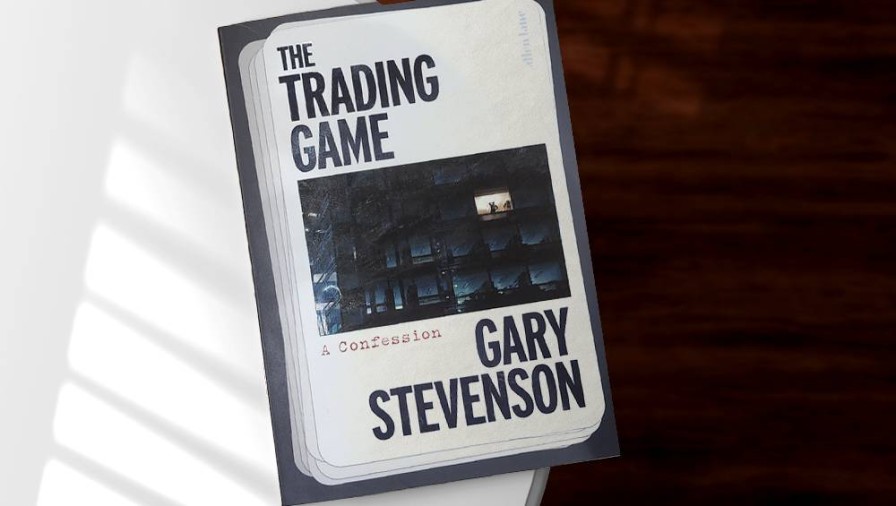Smartest guy in the room
The rise and fall of a financial trader.
WATCH: NBR columnist Nevil Gibson speaks with Calida Stuart-Menteath.
The rise and fall of a financial trader.
WATCH: NBR columnist Nevil Gibson speaks with Calida Stuart-Menteath.
Insider stories of the high-pressure, high-reward world of financial trading are appealing because they throw some light on a mysterious activity to most of us – including business journalists.
Michael Lewis has done a good job, starting with Liar’s Poker: Rising through the wreckage of Wall Street (1989). It was about his period as a bond trader at Salomon Bros, once a pillar of Wall Street but now long forgotten.
As a successful author, Lewis did not return to finance until 2010 with The Big Short, about the housing bubble that caused the 2008-09 global financial crisis (GFC). This was turned into a movie that highlighted how a group of contrarian investors profited from a market collapse. Flash Boys (2014), about high-frequency trading, and Going Infinite (2023), about a fraudulent cryptocurrency scheme, are more recent efforts.
Hollywood produced classics such as Oliver Stone’s Wall Street (1987) and its sequel, Money Never Sleeps (2010). Stone’s father was a stockbroker and the lead character, Gordon Gecko, is an amalgam of real-life characters. The Wolf of Wall Street (2013), based on the memoirs of shyster sharebroker Jordan Belfort, also focused on stocks rather than financial trading.
I recommend a Netflix production, Fair Play (2023), which shows the impact of trading floor behaviour on a relationship between two employees at a hedge fund. Its writer-director, Chloe Domont, based it on her experiences in a Hollywood writers’ room dominated by men rather than a financial trading floor.

Gary Stevenson outside the Bank of England.
Salomon Bros ended up as part of Citigroup, which is the setting for The Trading Game, a real-life ‘confession’ by Gary Stevenson about his years as a Stirt (short-term interest rate trader) at Canary Wharf and later Tokyo. It is closer in tone and content to the story of derivatives trader Nick Leeson, who bankrupted Baring Bros in 1995. That was told in his autobiography Rogue Trader (1996), which was also turned into a movie (1999).
Stevenson’s story is more compelling because it tells how he turned his modest background and mathematical ability into fulfilling his ambition to be a millionaire in his 20s. His smarts gave him entry to the London School of Economics, where he won a gaming competition that earned him an internship at Citibank.
There, he was taken on fulltime and thrived at the Stirt desk comprising a group of six other traders he vividly describes and identifies only by their first names. Two are like fathers, though poles apart in personality. Two others are mean or friendly uncles, and two are like big brothers. Higher-ups from the trading desk are more likely known by their nicknames, such as the Frog and the Slug.

London trading floor at Citibank.
Stevenson, known as Gaz, explains the inner workings of foreign exchange swaps at length, as he works his way to getting his own ‘book’, on which the annual bonus is paid based on profitable dealings. Each trader’s book is a specific currency such as the euro, Swiss franc, or Scandi (Nordic countries). The lowest-ranking one is the kiwi and is the first he is given.
He also ‘covers’ for other traders when they are absent if a broker calls. Brokers provide more than the orders on which all transactions are based; they also pay for boozy lunches and dinners. These fill the gap in lives that start early and often don’t finish until the evening.
“Looking back at those first few months on the desk, going out drinking … making my first seven hundred grand … I can’t believe how much fun it all seemed, at the time. The days became nights became days became nights and it all seemed to blur into one,” he writes.
Stevenson’s most profitable years coincided with the GFC, as central banks pared their rates to zero in hope it would stimulate an economic recovery. Most expected this to happen and that rates would soon rise. They didn’t, and Stevenson continued to rake in profits with his gloomy prognosis that zero interest rates would stay that way because the global economy was “f-----”.
By 2011, “it had started to become clear to me that the market was wrong,” he writes, while taking out large and profitable bets on what he calls “the disaster trade”. But these lucrative times couldn’t last. When the Swiss National Bank posted a minus rate of 4.5% in 2010, it caught him (and everyone else) by surprise. Soon, his book had reversed into the red, wiping out all his previous gains. The losses were eventually clawed back, but the halcyon days were over.

Tokyo’s financial district.
Stevenson goes to Tokyo, where the trading desk is sedate and risk averse. The lack of activity is the beginning of his mental and physical breakdown. He decides to quit, but only when his retrospective bonus was paid out. This is where the story turns nasty, as Citibank does its worst to prevent the loss of a top trader.
The final section of the ‘confession’ is brutal as Stevenson is caught in a two-year Kafkaesque world where he continues to get a £120,000 ($254,000) salary and paid accommodation in Tokyo – but not the £2 million bonus he is owed.
Stevenson waited 10 years after his eventual departure in 2014 at age 27 before publishing this account. He maintained the woes of the global economy were due to inequality, which put him closer to Thomas Piketty than the orthodox views of Citi’s economists. In fact, economic growth stalled in 2011 because of the eurozone debt crisis.
These explanations are the least convincing part of the book. Stevenson’s biography states he went back to university – this time Oxford – to study the discipline. He joined millionaires’ campaigns for wealth taxes in the UK, created a YouTube channel, and became a contributor to The Guardian, which praised his book for exposing high finance as “toxic, reckless, and deeply cynical”.

Gary Stevenson promotes his book in a London bookshop.
This conversion and commitment to ‘woke’ economics will turn off some readers. Though not stated in detail, similar arguments are contained in recent ‘loathing the loaded’ books: Ingrid Robeyns’s Limitarianism (which urges a wealth cap) and Enough, by Luke Hildyard. In New Zealand, Max Rashbrooke puts the case for less inequality in Too Much Money (2022).
The Trading Game reads like a novel and reveals more than you might want to know about the ethics or otherwise of a misunderstood activity. The grammatical lapses and loose language are excused by Stevenson’s self-deprecatory adoption of Cockney barrow boy speech and manners, while leaving no doubt about his superior intelligence compared with everyone else.
As a moral story, its lacks redemptive value, as nothing has been heard about Citibank’s response to the unflattering revelations or complaints from the people who must recognise themselves as being harshly judged.

The Trading Game: A Confession, by Gary Stevenson (Allen Lane/Penguin).
Nevil Gibson is a former editor at large for NBR. He has contributed film and book reviews to various publications.
This is supplied content and not paid for by NBR.
Sign up to get the latest stories and insights delivered to your inbox – free, every day.